We once knew a chick who broke an ankle hiking at night and wouldn't step off asphalt from that day forward unless there was light in the sky. What a shame for her, 'cause any knowledgeable trekker'll tell you that the best desert hiking is nocturnal, and it's twice as good in the summer. Our favorite after-dark delight is this short-but-sweet loop, which starts at the Siphon Draw trailhead near the Lost Dutchman State Park amphitheater and follows a gradual rise along the Prospector's View Trail to the base of the Superstition Mountains. Stop to drink in the silvery view at Green Boulder, which resides in the moon shadows of some lovely, snaggle-toothed pinnacles. There are several options for the return trip, but we usually head south on the Treasure Loop Trail, traversing a mile or so of bumpy washes and magical forests of jumping chollas that gleam like fresh bone in the glare of a full moon.
Best Moonlight Hike
Green Boulder Trail
Best Blair Witch Hike
Flume Trail

We're a human compass. It's innate. Until we met this befogging jaunt, no map was too complex, no maze too maze-like for our superhuman route-finding ability. Perhaps the hike's transitional setting, between lowland desert and upland scrub, had something to do with it, but after about an hour of head-scratching trekking, we felt as though we were running around in circles, holding a jerky video camera, and finding beating human hearts on the ground.
It might've been the spirit of one of the gold miners who pushed out the native Tonto Apache back in the 1870s — or an angry Apache specter seeking revenge — but whatever the spook du jour, this trail creeped us out. If you like creepy, it's a lovely place, set largely in a dry riverbed shaded by trees that wouldn't grow a mere 500 feet lower in elevation.
We know what you're thinking: "I never get lost. These people are pansies. I'll show them." Right? Well, lay in a supply of breadcrumbs, bub, 'cause this witch is hungry.
- 37019 N. Lava Lane, Cave Creek, 85331 Map
- 623-465-0431
- www.maricopa.gov/parks/cave%5Fcreek/
Best Off-Trail Hikes
Estrella Mountain Regional Park
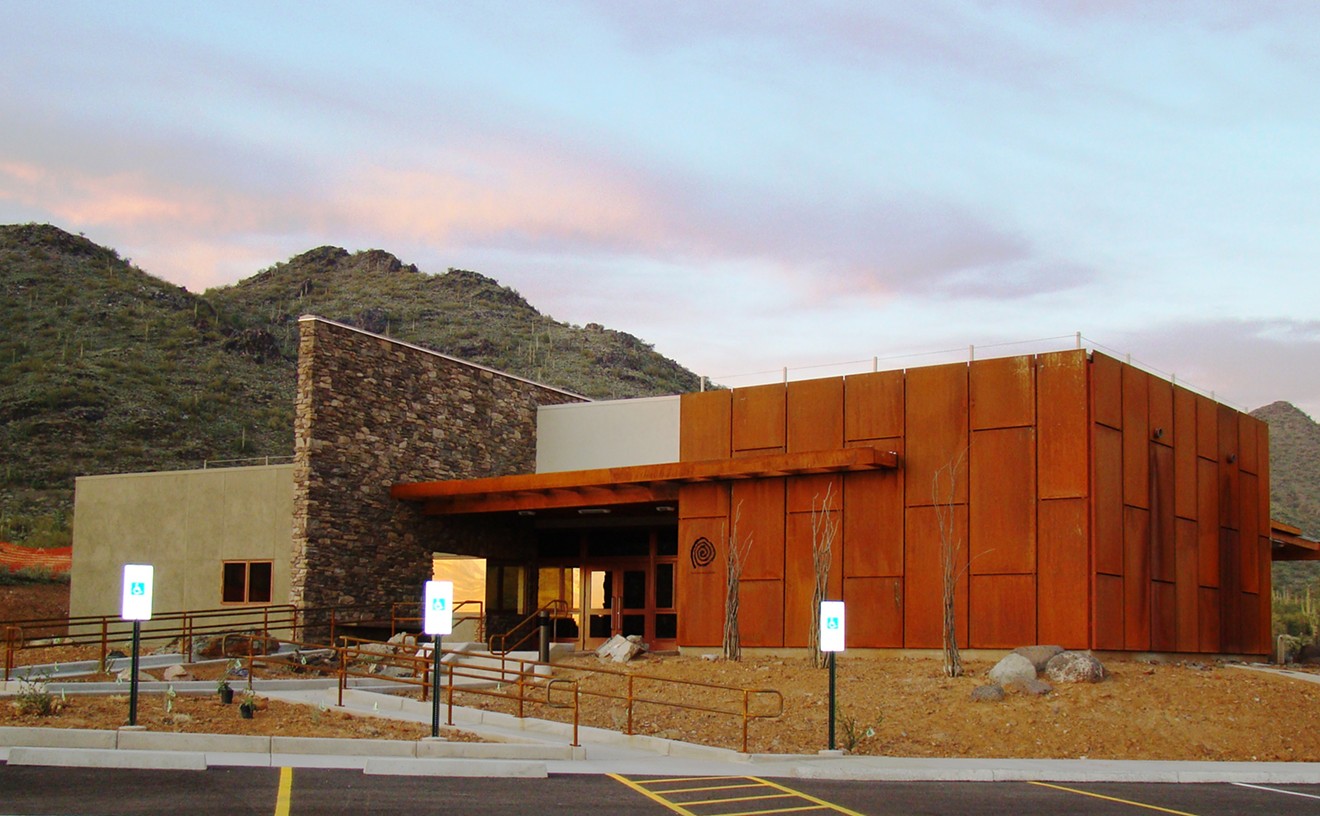
There's a moment when you reach the southwest extremity of this park's Pedersen loop trail that you stare into madness. The glimpse into the vast vacuum of central/western Arizona is the sort of horizon-less view you see in the movies, where some poor sap's got himself lost in the trackless desert, and now he's shuffling along like a zombie in the middle of nowhere. The outlook from this particular point on the Pedersen is a lot like that: Nowheresville.
Don't go that way.
Instead, trek east a couple of miles and keep going straight, even after the Pedersen bends north. We guarantee you'll have one of the times of your life — if you live. Heh heh.
The route you'll find yourself on travels straight up the gut of the least-accessible mountain range in the greater Phoenix area: the Estrella, or Star, Mountains. Whatever route you choose, it'll be random; there are no sanctioned trails to guide you to the 3,650-foot pinnacle of the range, so it's all about route-finding your way through the lush, virgin terrain. How delightful, you say! Well, that depends on whether you like being slapped across the face or bonked on the head. The going's way steep and way exposed. The vegetation's so thick you can't see your legs, and the vicious flora keeps depositing small, pointy pieces of itself in you. It's prime rattler and Gila monster country, and, as noted, you can't see your legs.
So why torture yourself this way? Here's why: A hike into the Estrellas is a trip into the past. This is what Phoenix — and the upper Sonoran Desert — looked like before we brought the jackhammer down. You'll see flora and fauna that no longer exist elsewhere, you'll drink in panoramic views that few others have seen, and you'll set your feet down in places that no one else has. Ever.
Just don't kill yourself, 'kay?
- 14805 W. Vineyard Ave., Goodyear, 85338 Map
- 623-932-3811
- www.maricopa.gov/parks/estrella/rodeo.aspx
Best Badass Hike
The Flatiron
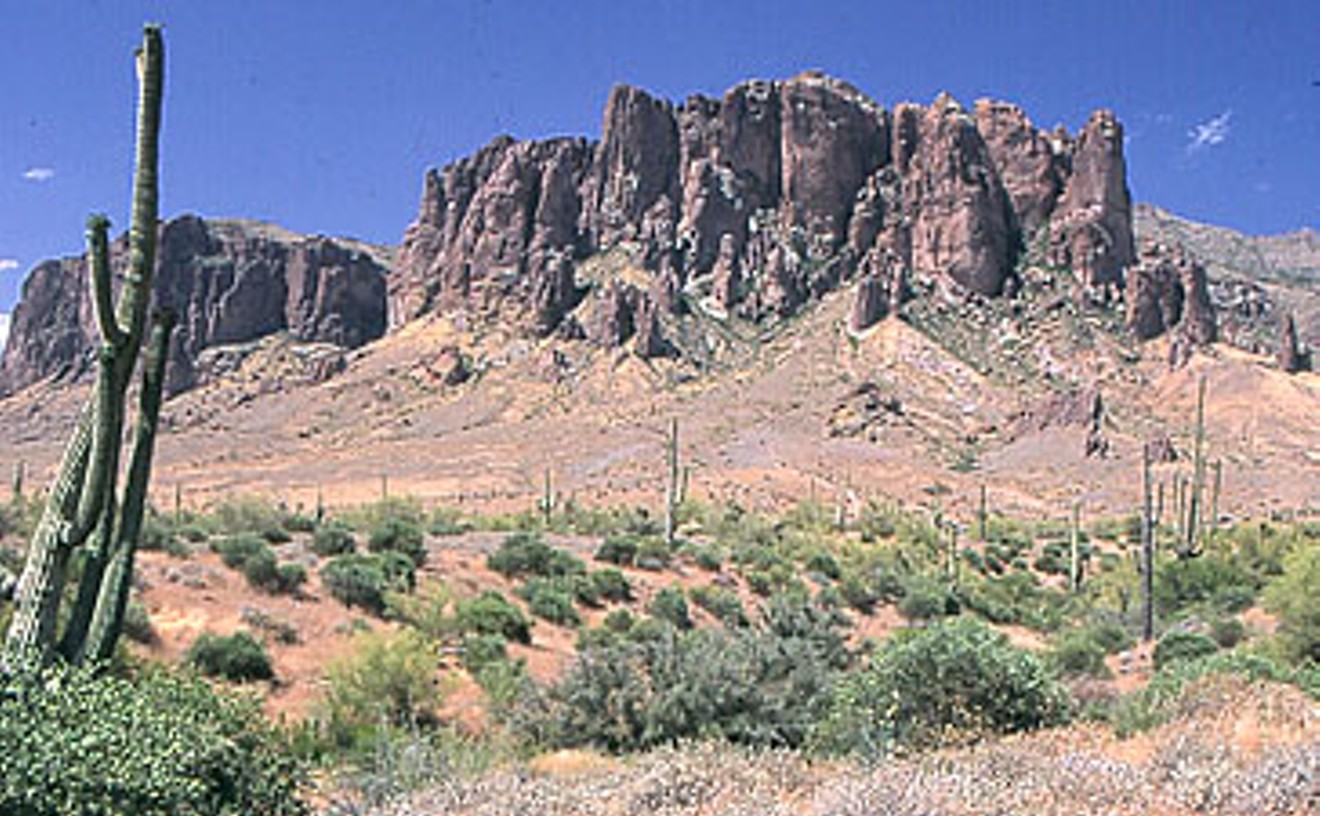
Are you one of those nauseating people who conquer Camelback Mountain in an hour-10 without breaking a sweat? Are you so filled with self-love that you then preen before the opposite sex at the bottom of the trail, flipping your hair and stretching your muscles and stuff while we lowly sweathogs are still grinding up those damned log steps? Well, meet the Flatiron, sucka. It'll kick your hubric booty.
Camelback is one nasty bee-yatch. The tallest point in the Valley, she tops out at 2,704 feet, and there's an elevation gain of about 1,200 feet from the Echo Canyon trailhead. These figures would make a Himalaya vet chortle, but they don't tell the whole story, and we'd like to see a snowhead tackle the Camel in, say, August. We'll see who chortles last.
The appropriately named formation called the Flatiron — it looks, for all the world, like an iron — rests haughtily at 4,800 feet, at the pinnacle of the Superstition Mountains. The elevation at the jumping-off point, the Siphon Draw trailhead, is about 2,000. Math says: two Camelbacks up, two Camelbacks down. Uh . . . ouch.
The trek starts near the campground at Lost Dutchman with the part of the hike we call the Tedious Trudge — 1.6 miles of rocky, irritating going on a gradual rise that leads up to and over the base of the Supes and into the maw of the Basin, a humongous natural amphitheater. This part of the hike accounts for about 1,020 feet of the total elevation gain.
The heartaches begin at the 1,021st foot. There, you're greeted by a vertical view of what's in store for the next, oh, mile and 1,800 vertical feet or so. Now, 1,800 feet in one puny mile is pretty vertical — in fact, it don't get much more straight up than that. More daunting still, the path (loosely termed) follows a natural drainage littered with giant boulders and prickly flora. It's very much like the Camelneck route on Camelback — but worse.
One more quick knock on ol' Dromedary Mountain: People say C-Back offers the best local panoramic views, but pay those unschooled people no heed. The 360 that fills the sockets from the top of the Supes puts anything else within a 100-mile radius to shame.
- 6109 N. Apache Trail, Apache Junction, 85219 Map
- 480-982-4485
- azstateparks.com/lost-dutchman
Best Bouldering
Echo Canyon Trail
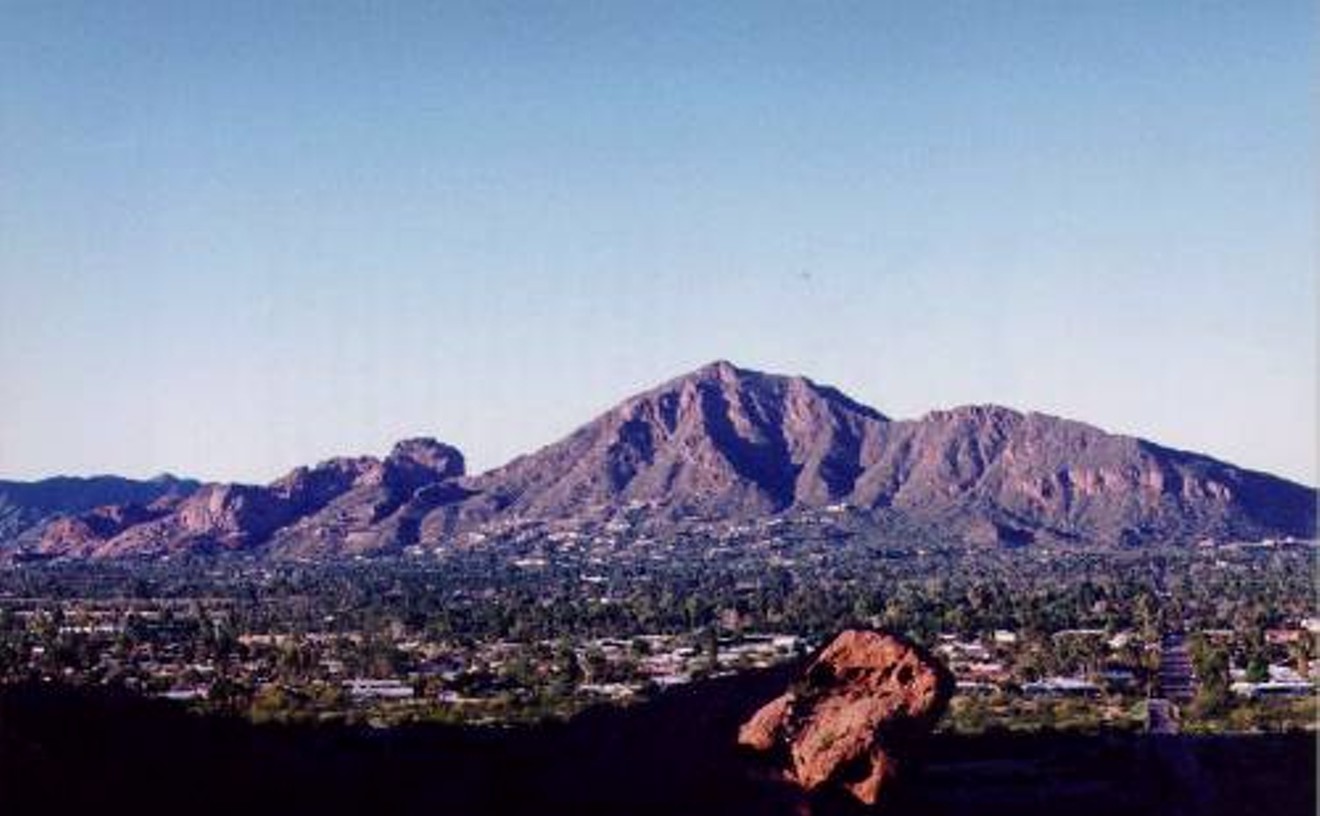
Bouldering is nothing more than rock climbing without a rope on short boulder faces. You don't need a lot of gear to do it — just a pair of good rock shoes and gymnasts' chalk, to dry up the sweat on your hands. Even those two items are optional, though the experience won't be as fun without them. By focusing on the climbing moves instead of futzing about with a lot of equipment — not to mention worrying about dying an untimely death — bouldering can be a wonderfully liberating experience, mentally. And it's a heck of a workout, physically. Best of all, it's free. At least, it is at Camelback Mountain, which is part of the Phoenix parks system. Quite a few bouldering options exist at Camelback, but we like the big pyramid-like boulder at the top of the trail's first long set of railroad-tie stairs.
We've spent many an hour turning our hands into ground beef on this 25-foot-high boulder, especially the east-facing corner that wraps around into an overhanging cubby with tiny finger-pockets for handholds. Another traverse near the north side is where we like to practice our heel-hooking technique. Best of all, when our arms and hands are blown, we can jog up the 1.2-mile trail to the summit of Camelback to work out the rest of our body. For climbers, this combo workout is cross-training at its best.
- 5950 N. Echo Canyon Parkway, Paradise Valley, 85253 Map
- 602-261-8318
- www.phoenix.gov/recreation/rec/parks/preserves/locations/camelback/index.html
Best Rock Climb and Rappel
The Hand and Razor's Edge

The Hand is a gorgeous, freestanding pinnacle of prehistoric lava in the Superstition Mountains that almost looks as if it belongs on Easter Island. It more resembles a finger as you hike toward it along Treasure Loop trail, though from the side it does really look like a hand, complete with a short thumb.
One of the reasons we love this climb is the belay perch on the space between that great thumb and the rest of the hand. It's like sitting in the saddle of a giant horse, our legs dangling over the steep cliffs on each side. Steel chains bolted into the rock provide a good anchor here, but there's certainly a high danger factor — let's just say that if you have no experience with rock-climbing techniques and equipment, the pretty view from this ledge just might be the last one you ever see.
Razor's Edge sports a moderate technical rating, but indoor-only climbers be warned — this one requires the lead climber to pack more than a medium amount of chutzpah. The two pitches of climbing have many sections with no protection for the lead climber. And, as on many climbs in the Supes, we found some loose rock that is just waiting for a careless climber to pull on.
In general, though, the pointy dacite outcroppings make good holds for hands and feet. The fun climbing and airy, heart-pounding exposure of Razor's Edge even received notice by Climbing Magazine. (www.climbing.com/exclusive/classicclimbs/razorsedge).
Also worth mentioning is the thrilling, 150-foot rappel, which is how you get down from this thing. The first climber that goes down should be ready with his or her camera to get shots of the others as they descend on the rope. A day at the Hand, especially properly photographed, will be a day to remember.
- 6109 N. Apache Trail, Apache Junction, 85219 Map
- 480-982-4485
- azstateparks.com/lost-dutchman
Best Rock Gym
Phoenix Rock Gym
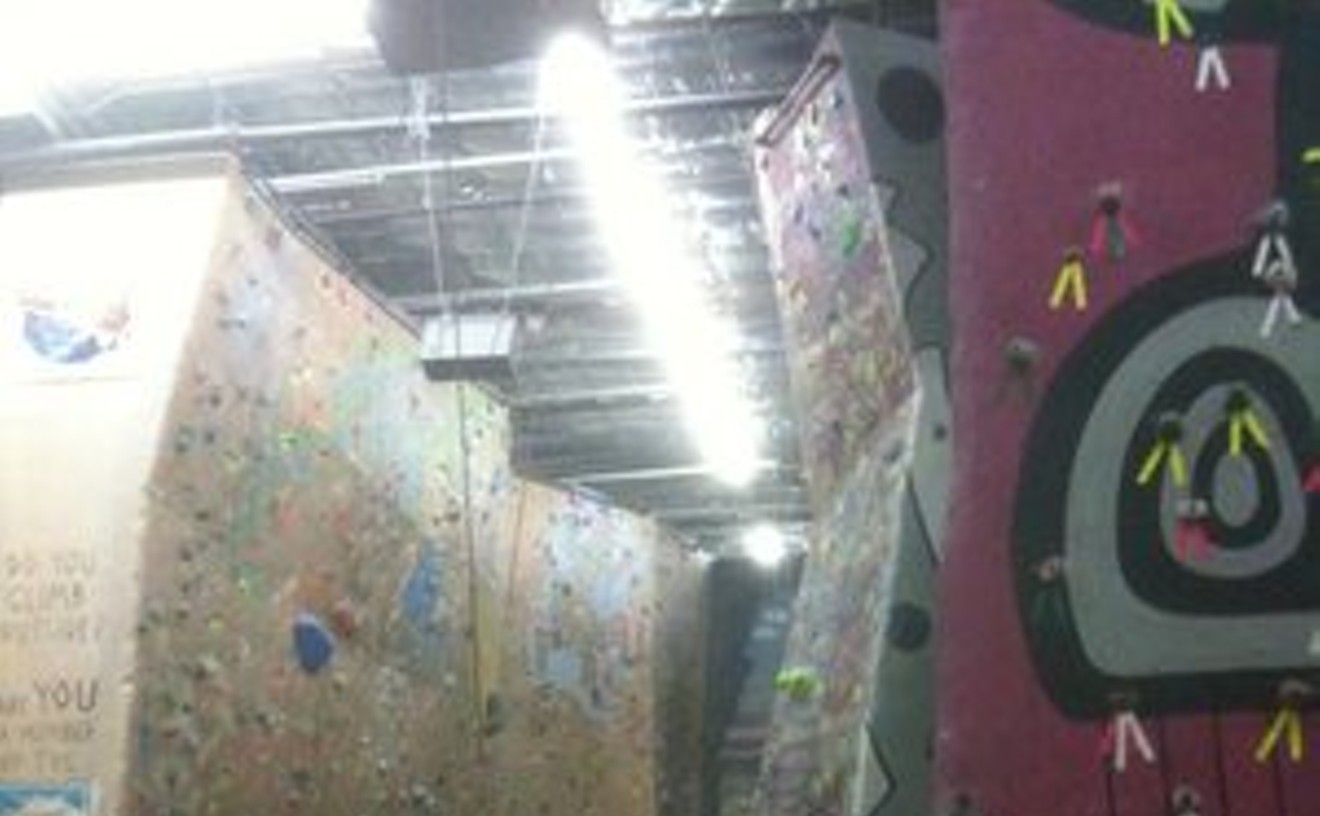
When the rocks outside get too hot to touch, climbers have two choices: Head north or head indoors. For the latter option, you can't do better than the Phoenix Rock Gym (which is actually located in Tempe, near Arizona State University). The place has a good mix of walls for beginners and advanced climbers, and a good mix of people, too. On the same afternoon you can see young couples introducing their 5-year-old to climbing and hear muscle-packed experts chat about drop-knee technique. The top-rope walls become crowded on Tuesday and Wednesday evenings, but that's the price of success. Thrill-seekers can always move into the lead wall area, where climbers practice life on the "sharp end" and sometimes fall up to 10 to 15 feet on a rope before being caught by a belayer. One of the original rock gyms in Phoenix, if not the first, the PRG recently went through a major renovation in which the owners added a second bouldering area upstairs, this one with more heavily inverted walls. If you want to see human spiders climbing upside down, this is the place. The "old" bouldering area (for the uninitiated, bouldering is the art of traversing relatively low walls without being tethered) received a summer makeover this year, and now sports murals of colorful cartoon sea creatures. If they were to add bunks and a vending machine with beer, we'd probably move in.
- 1353 E. University Dr., Tempe, 85281 Map
- 480-921-8322
- www.phoenixrockgym.com
Best Road Bike Ride Up a Mountain
East Valle Vista Road, Phoenix
You may have heard about the hilltop residents who tried to block access to Valle Vista Road at the upper foothills of Camelback Mountain. Ticked-off homeowners said they were tired of speeders, loud noises, break-ins, public sex, and other high jinks sometimes committed by visitors to this scenic road.
But the city chose not to install roadblocks, and the nearby residents, in fact, reportedly never considered blocking access to bicyclists or pedestrians.
That's great news for cyclists, because although the streets are long in the Phoenix metro area, the whole town is fairly flat and not much of a challenge for you hill-climbing types with calves like bricks. Valle Vista Road, on the south side of Camelback Mountain, is a wonderful addition to any bike ride in the area. Getting to it is easy: Just head north on 56th Street or Arcadia Drive, both of which lead to the hill-hugging Valle Vista Road.
We like to link it to our longer, around-the-mountain ride. But it's also a nice ride for more casual riders in the Arcadia or downtown Scottsdale area. The steep grades always get us pumped, and the view is stellar. Despite the complaints by neighbors, we never see much going on up there during our rides. It's usually just a quiet, pretty view. Many times, we'll even feel a wisp of a mountain breeze that we didn't notice in the flatlands below.
If you go up at night, though, watch where you shine your headlamp or you might see something to complain about.
Best Mountain Rescue
Superstition Mountains, March 2008
It's inevitable that a few people end up dead or seriously hurt each year in the Valley's semi-wild mountain parks, given the crowds those parks attract when the weather's nice. Fortunately, we have volunteer groups like Superstition Search and Rescue, or its larger cousin, the Central Arizona Mountain Rescue, to keep the body count as low as possible.
Last spring, the Superstition team, affiliated with the Pinal County Sheriff's Office, showed off its skills in a dramatic cliff-side rescue on the face of the Flatiron, a prominent prow of rock on the west side of the Superstition Mountains.
TV and newspaper reports made it difficult to know exactly what went wrong. Somehow, after hiking up the steep Siphon Draw Gully trail, Valley newcomer Emily Decker and her boyfriend, Texas resident John Wilkinson, both in their 20s, had found themselves where they should never have been: perched on a near-vertical face of the Flatiron. Wilkinson had fallen 80 feet and was left balancing on a ledge, bruises and cuts all over his body. He had bashed his face so hard, according to reports, that he lost seven teeth. Decker was stranded on another ledge above him, too terrified to move.
With the help of a helicopter, on loan from the Arizona Department of Public Safety, team members lowered a 600-foot rope and plucked the pair safely from the cliff face in a risky effort that took nearly 12 hours and ended just before midnight.
A quote from Decker, in the East Valley Tribune, reveals the underlying problem that leads to most mountain rescues: "We just had no idea of the danger that we were getting into."
Best Overlooked Area for Outdoors Enthusiasts
San Juan
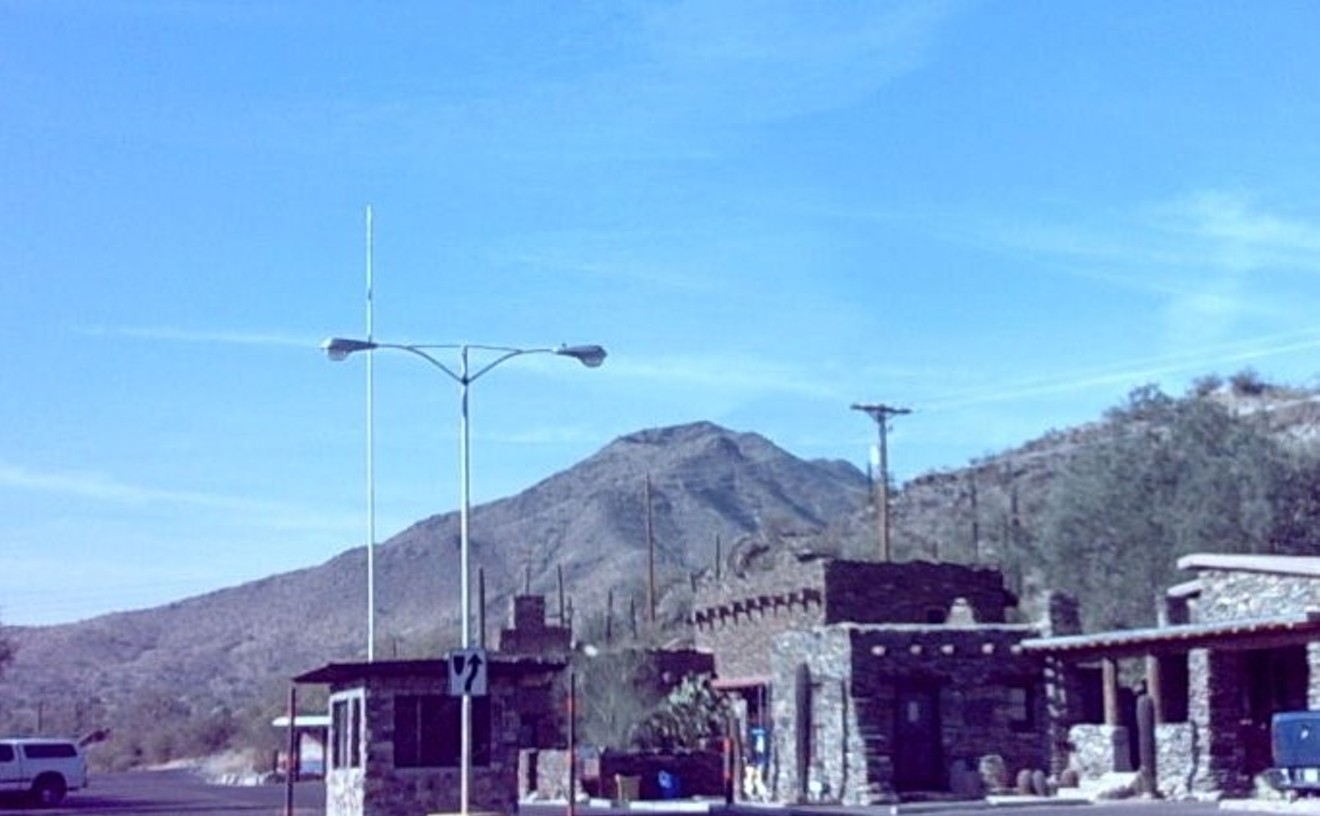
San who?
Exactly. Even we die-hard outdoorsfolk spent many a wasted year in ignorance of this under-utilized section of South Mountain Park before a wrong turn turned out right. Our happy misadventure started at that big fork in the road where nobody turns west 'cause everyone's headed east to the top of the range. And who can blame them? The top of this range, the centerpiece of the largest municipal park in the world, is a pretty special place.
But so is San Juan, South Mountain's fetching ground floor. You'll know you're on the right path when you see the snaggle-toothed spires of the Estrella Mountains looming dead ahead in the windshield. On either side of the road are wild tracts of lowland Sonoran Desert that slowly give rise to the park's curvaceous promontories. There's excellent hiking here in the rolling foothills — all of it fairly easy, unless you decide to go vertical — and we've yet to find a better place to ogle desert wildflowers in the spring.
A little farther down the road, there's a parking lot that provides access to a riparian area. Dry most of the year, the riverine system offers a desert experience that's rare, especially in the central core. You can walk for hours through boulder-chocked mini-canyons carved by monsoon storms and flash floods.
At the end of the road lies San Juan Lookout, which offers a prime view of the city plus a picnic area and the terminus of the 20-plus-mile National Trail.
- 10919 S. Central Ave., Phoenix, 85042 Map
- 602-262-7393
- www.phoenix.gov/parks/southmnt.html





